- Home
- Jerold Last
The Body in the Parking Structure (Roger and Suzanne South American Mystery Series Book 4)
The Body in the Parking Structure (Roger and Suzanne South American Mystery Series Book 4) Read online
The Body In the Parking Structure
By Jerold Last
All Rights Reserved
Copyright 2012 © Jerold Last
Cover art copyright 2012 © Caitlin Harley
ACKNOWLEDGEMENTS
As usual, my wife Elaine made several useful suggestions and constructive criticisms, as well as helping with editing several drafts of the manuscript. She also invented the character of “Bruce”, who is destined to become a regular participant in this series. Special thanks go to Caitlin Harley for designing and creating the cover for this story.
Table of Contents
Chapter 1. Suzanne finds the body
Chapter 2. The next day
Chapter 3. The following day
Chapter 4. The fourth day
Chapter 5. The last day
Notes_from_the_author
Chapter 1. Suzanne finds the body
For the first time since we had met, Suzanne discovered a dead body without me being there. She was collecting her car at twilight from the UCLA parking structure after a quick trip to the laboratory to change the samples on a DNA sequencer. The structure seemed to be deserted except for her and a large lump lying lifeless between her car and the garage wall. She called 911 to report the body then called me.
The police and I arrived at the garage at about the same time. While she was waiting for us, Suzanne took a closer look at the corpse and got her second shock of the night. She not only counted at least five bullet holes in the body but she also recognized the victim from one of our previous cases. It was Eugenio Vasquez, a biochemist from Santa Cruz, Bolivia, who we had met the previous year in Lima, Peru. We had spent a pleasant afternoon with him and his cousin Rogelio, at a couple of museums, eating ceviche for our first time and drinking Peruvian beer.
The responding police officers took her name, address, asked about her reason for being there, and checked her car registration. Suzanne was asked to stay out of the way and wait for the detectives to question her. I identified myself as her husband and a former LA Police Department homicide detective who had just arrived on the scene. They were OK with me keeping her company while we waited for the detectives to arrive.
The first chance we had to be alone Suzanne slumped against me, using my body to support her, and very quietly brought me up to date.
"Eugenio had a slip of paper in his pocket with my name and UCLA address on it. The same slip of paper also had the name of a small local Biotech company, Plantacur, on it."
I asked her how she knew this.
She admitted to having gone through his pockets after recognizing the body during the time before the police arrived.
"I was working with RNA in the lab, so had a few pairs of plastic gloves in my pockets. I couldn't have left any fingerprints or DNA on Eugenio's body or the note, so I put the note back in his pocket. Do you remember who Professor Vasquez was, Roger? We met him in Lima last year."
"Yes, I remember him from our day at the Incan Museum. He studied in Australia so was fluent in English and told a lot of Foster Beer jokes. I liked him, both as a person and because most of the locals didn't speak English, so I hung out with him a lot that first day. Do you remember what he did at the university in Santa Cruz?"
"He was what we call an Ethnobotanist. He studied local exotic plant species that the Shamans and Curanderos from the indigenous tribes used for curing local diseases as possible sources of new and novel drugs for the developed world. I wonder if that's his link to either me or to Plantacur. All of this raises the question of what should I tell the police when they question me."
"They're going to find your name in his pocket. So, you answer all of their questions truthfully, but don't volunteer any additional information. You don't have any idea why he had your name in his pocket and you don't think you've ever heard of Plantacur. Tell them anything you remember from that day in Lima, but they don't have to know you were there for anything other than a scientific meeting where you were an invited speaker."
The detectives arrived and quickly separated us and started questioning Suzanne. They treated her politely as a witness rather than as a suspect and finished with her after less than 20 minutes. We drove home in two cars and got busy with our normal routines, Suzanne feeding Robert, our 9 month old son, and bathing him while I started cooking dinner for Suzanne, Robert's nanny Bruce, and me.
Over our very late dinner served at 10:30 PM, the normal time for supper in South America but not for us in California, the main topic of discussion was tonight's murder. Suzanne described finding the body for Bruce's benefit. The questioning by the detectives was perfunctory at best. They confirmed that she was a Professor at UCLA, that she sometimes stayed late or returned to the lab from our nearby house, and that she always parked her car in the parking structure when she was at work. She had met the victim casually a year earlier at a scientific meeting in Peru. That was it. She frowned and fiddled with her food.
"I have a bad feeling that this killing is going to go into the police files as just another Hispanic killed in a drug deal that went bad. If that happens, there's no way it's going to be solved. That is, unless we solve it. Do you have some time to investigate, Roger? Bruce and I can help."
"I liked Eugenio and shouldn't be all that busy for the next week or so. Vincent can cover for me if any new cases come calling. Sure, count me in."
I volunteered to cover the Plantacur angle tomorrow, and also to see whether Eugenio's name cropped up in a quick computer search of recent patents on potential new drugs. Suzanne would talk to people in her Biochemistry Department to find out if anyone had seen or heard anything unusual the previous night. Bruce would look after Robert and serve as the reserves if needed.
Chapter 2. The next day
I made an appointment to visit the Scientific Director at Plantacur for 11 AM, after introducing myself over the phone as a patent attorney, which I actually was before becoming a P.I., and dropping Suzanne's name. She was a scientific leader in Plantacur's field. As a faculty member at UCLA, hers would be a familiar name to any scientist at the company, which had its small corporate headquarters and research facility in an industrial area near the airport. That left me over an hour to search the US and international patent literature, all neatly computerized and indexed on-line if you knew where to look.
It took less than 15 minutes to find and print out three international inventions patented by Eugenio Vasquez and various colleagues from Bolivia. All three were for the use of specific native Bolivian plant species as sources of novel drugs to treat a litany of possible diseases, ranging from cancer to male impotence. I skimmed all three, which were pretty much the same. The only real difference was the specific plant, and the genus and species it came from, differed from patent to patent. By then it was time to go.
I had also looked up Plantacur. The company was a start-up biotechnology firm funded by venture capital, which had been in operation for three years now. They were trying to commercialize a new anti-cancer drug isolated from a tropical plant. In three years they had isolated the active drug from the plant, scaled up production, and initiated pre-clinical toxicity testing. Their corporate goal was to get through toxicity testing successfully and get the drug into Phase I clinical trials. To get funding for more extensive clinical trials after that they would have to either be bought out by a large pharmaceutical company or go public and become a corporation listed somewhere to trade its stock to the public.
Plantacur rented an entire one-
story medium-sized dirty beige stucco building with a flat roof in an industrial park just off Airport Avenue. I parked in their small lot and walked into the building unchallenged. The receptionist looked up from the paperback bodice ripper she'd been reading to ask who I wanted to see.
"Dr. James Shantz, the Scientific Director. I have an appointment."
The receptionist picked up a phone, dialed a number, mumbled a few words, and directed me to his office.
"Down the hall to the left, third door on your right."
A tall thin gentleman of about 40 with a mustache, wearing a clean white lab coat, greeted me with an enthusiastic handshake and an offer of coffee, which I shook and took.
We sat and looked at each other across his large, cluttered desk.
"So, what brings you to Plantacur today, Mr. Bowman?"
I had decided how to play this in the car on the way over, thanks to my morning's patent research and my equally firm belief in avoiding the truth when interviewing suspects.
"I represent a scientist from Bolivia named Eugenio Vasquez. He holds several patents on drugs he might be willing to license to your company for development if the price were right. Are you familiar with his work, Dr. Schantz?"
"Call me Jim. Now let me see. You said Vasquez, from Bolivia, didn't you? No, I don't think I've ever been to Santa Cruz. I have no idea who you're talking about."
Santa Cruz is the largest city in Bolivia, but not the only one. Most people in the U.S. would think of La Paz before Santa Cruz. Obviously he was lying or he wouldn't have known where Eugenio worked. But why would he lie about that?
"Let's see what happens if I stir the pot a little bit more," I thought to myself.
"He's authorized me to arrange for licensing one or more of these drugs with you, based on discussions he had back in Bolivia with someone from your company. I don't have the name. Perhaps you can take a quick look at his patents and refresh your memory."
I pulled copies of the printouts from this morning from my briefcase and handed them to him. He skimmed the forms and frowned.
"Sorry, I don't know anything about these drugs, and we're a one-product company until our new drug gets into Phase II clinical trials. That's all we can afford to do with our resources. Now, if you'll excuse me, I have a meeting scheduled in five minutes. Good-bye, Mr. Bowman."
I drove back to the office and spent a few hours learning all there was to learn about Plantacur. As a privately owned company, there wasn't a lot of financial information they were required to reveal publicly, so I started with routine credit checks and the company website. The website told me that the CEO was named Robert Schantz, almost certainly a relative of Jim's. I Googled him and sure enough, they were brothers. The drug they were built around looked promising in cell culture studies, but so did a lot of other drugs that were too toxic or ineffective in humans that never made it to the marketplace.
From my perspective the company should have jumped at the chance to buy a few more drugs that they owned the rights to for a reasonable price. An additional new compound or two in the pipeline would be a valuable asset to a small startup company. Jim Schantz had said all of the wrong things to me this morning. Something smelled very wrong at Plantacur. I put this stuff aside to discuss the science with Suzanne tonight.
At dinner that night Suzanne shared her findings.
"Nobody I spoke to saw Eugenio yesterday, and nobody had ever heard of him. A couple of colleagues who left late and had cars in the parking structure thought they may have heard an argument as they got into their cars, but nobody heard anything specific and nobody wanted to get involved. Nobody was questioned by the police, who don't seem to be doing very much I can see to try to solve this murder. I hope you learned more than I did, Roger."
"Something's rotten at Plantacur."
I told Suzanne and Bruce everything I had found out today. Then I handed copies of the patents to Suzanne to read over.
"Do you think there might be anything worth killing for in those patents, Suzanne? That's the only thing that makes any sense to me if this isn't just a random killing of someone who was in the wrong place at the wrong time."
"I'm not sure you're asking the right question. It probably should be phrased as whether there's anything somebody might think is worth killing for in those patents. And if you ask it that way the answer has to be yes, simply because at this stage of the game any of those three drugs could turn out to be valuable if they work. And if I owned a lot of shares in a company with only one product, and things didn't look too good in the chronic toxicity tests, a new compound or two that I could own and develop just in case would be very attractive. It's a theory we could follow up on. And our list of suspects would be just about everybody in the company with substantial holdings of its stock."
Bruce had a suggestion.
"Is there any way to get somebody into Plantacur undercover who could sniff around a bit and get some ideas whether anyone there seems to be pessimistic about the current compound's long term fate as a cancer drug?"
Suzanne checked the company website.
"They have a position open immediately for a biochemist with a Master's degree and experience in purification and characterization of natural products from plants. Does that sound like anyone we know? He can apply on line 24 hours a day, 7 days a week."
"I'll call Vincent right now. He's got the right degree, he's a US citizen who's been a professor in Chile all these years doing research in the right area, and he just returned to the USA so could plausibly be looking for a job. He can get the application started immediately, and it will take weeks before they can expect to get letters of reference back from Iquique. If they really need someone they'll probably hire him tomorrow if he seems to know his stuff and let the paperwork come in later."
Ten minutes later I had called him, Vincent had been briefed on what we knew, and he was on-line filling out a job application. The references were all in Iquique. Vincent had met Eugenio in Lima the same time we did and had liked him, so was well motivated to jump into this case.
Chapter 3. The following day
Vincent's interview the next morning went well, and he spent the afternoon with HR people signing paperwork and getting employed, effective immediately. They cut him loose from the paper party at 3 PM, with a brand new company ID, an assigned parking slot, and an appointment at 4:30 to get his work assignment from his new boss, Dr. Poras. In the meantime he was free to wander around and meet the scientific staff he'd be working with. At the postgraduate degree level, there were less than a dozen scientists. They were all colleagues at work and socialized together after work, he was told.
Vincent took advantage of the opportunity and stuck his head into each of the three populated laboratories to say hello and ask what they were working on. In the modern fashion they worked in teams, so there tended to be one or two Ph.D.s and two masters degree level scientists in each laboratory, with as many as half a dozen B.S. degree technicians assisting them. As soon as he demonstrated that he understood the science and the jargon, everyone offered coffee and was eager to talk about their projects. Three meetings later he had met everybody doing anything scientific at Plantacur, and had talked about their research in laboratory-sized groups with five Ph.D.s, including Dr. Poras, and six M.S. degree holders. By then it was 4:30 and time for his one-on-one meeting with his new boss.
Vincent got debriefed that night over dinner at our house.
"My direct report, Linda Poras, is a doll. She's older than you are Suzanne, but can give you a run for the money on which of you is the more beautiful. She has red hair, blue eyes, and all the right curves in all the right places. It's almost enough to make me forget that I'm happily married. I think I'm really going to enjoy this assignment. Anyway, she leads the group that is trying to increase the yield of the drug from the crude plant extract, which mean a lot of analytical chemistry and a lot of tweaking the protocol to try to optimize a multi-step and complicated purification protocol. There's
not a lot of creativity there, but just a systematic approach to increasing product yield and purity at each step of the process. My first job is to optimize a chromatography step they use midway through the separation scheme for purifying the drug, which is an unusual peptide, and then scaling it up from milligram to kilogram scale. Dr. Arthur Fleet heads up the analytical chemistry section of our group, and two other Masters level chemists, John Farber and Eloise Gordon, have the same sort of responsibilities I do for different steps in the purification protocol.
"Another laboratory, directed by a plant geneticist Dr. Lorraine Evans, is more into biology. She and two M.S. botanists, Ernest Obregon and Viola Adams, are trying to breed new higher yielding strains of the tropical plant they extract the drug from. If the plant starts out with more of the drug it's cheaper to extract it.
"The third laboratory under Dr. James Schantz, the Scientific Director, and Dr. Emil Proctor is responsible for what they call product stewardship. That means they oversee all of the toxicity testing and preclinical trials all the way through the Phase I clinical trial. They, and two more MS scientists, are responsible for running a lot of the routine acute toxicity tests, contracting out the more complicated stuff like the chronic toxicity tests, and filing all of the required paperwork with the FDA and the other government agencies who eventually have to approve the drug for human use."

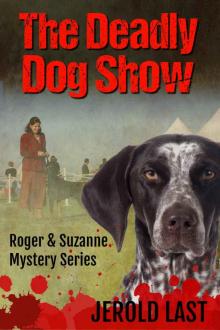 The Deadly Dog Show (Roger and Suzanne South American Mystery Series Book 6)
The Deadly Dog Show (Roger and Suzanne South American Mystery Series Book 6)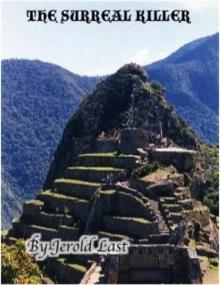 The Surreal Killer (Roger and Suzanne South American Mystery Series Book 2)
The Surreal Killer (Roger and Suzanne South American Mystery Series Book 2)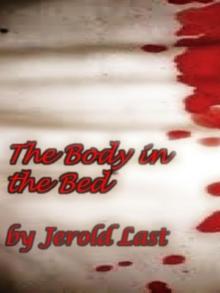 The Body in the Bed (Roger and Suzanne South American Mystery Series Book 5)
The Body in the Bed (Roger and Suzanne South American Mystery Series Book 5)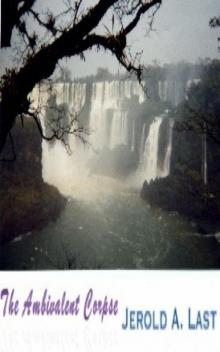 The Ambivalent Corpse (Roger and Suzanne South American Mystery Series Book 1)
The Ambivalent Corpse (Roger and Suzanne South American Mystery Series Book 1) Unbearably Deadly (Roger and Suzanne South American Mystery Series Book 9)
Unbearably Deadly (Roger and Suzanne South American Mystery Series Book 9)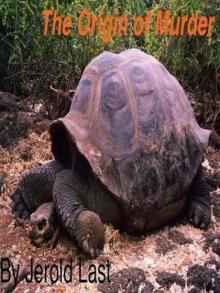 The Origin Of Murder (Roger and Suzanne South American Mystery Series Book 8)
The Origin Of Murder (Roger and Suzanne South American Mystery Series Book 8)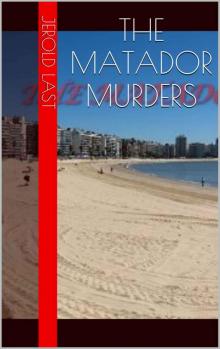 The Matador Murders (Roger and Suzanne South American Mystery Series Book 4)
The Matador Murders (Roger and Suzanne South American Mystery Series Book 4)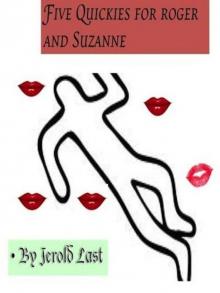 Five Quickies For Roger And Suzanne (Roger and Suzanne South American Mystery Series Book 7)
Five Quickies For Roger And Suzanne (Roger and Suzanne South American Mystery Series Book 7)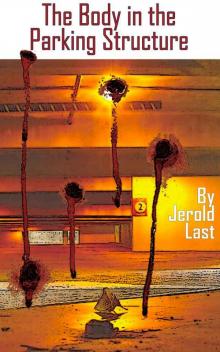 The Body in the Parking Structure (Roger and Suzanne South American Mystery Series Book 4)
The Body in the Parking Structure (Roger and Suzanne South American Mystery Series Book 4)